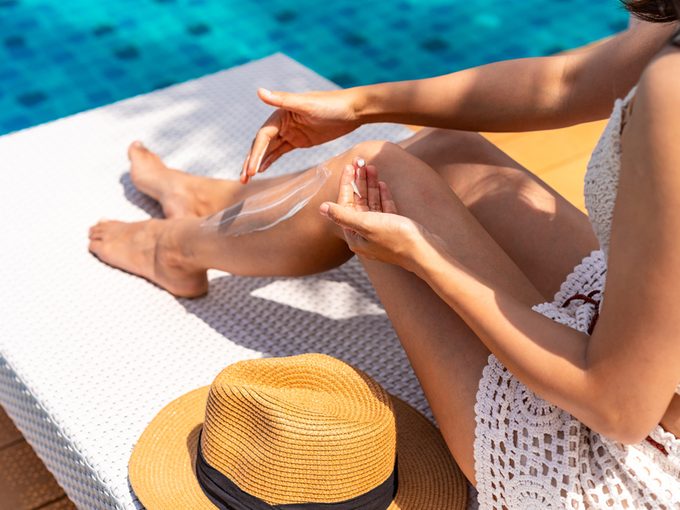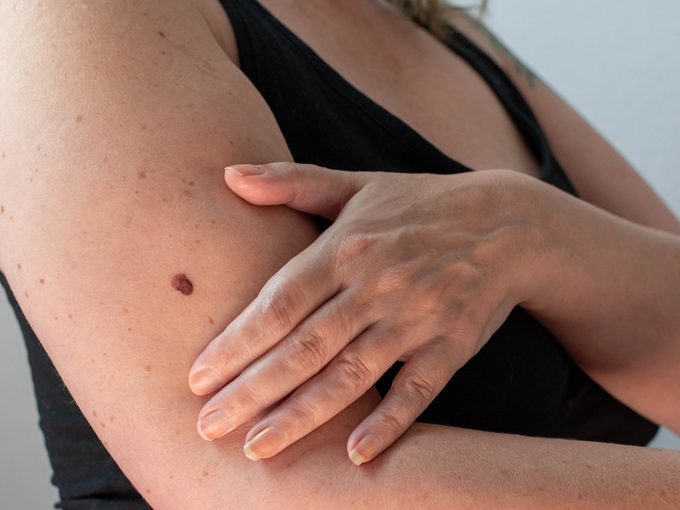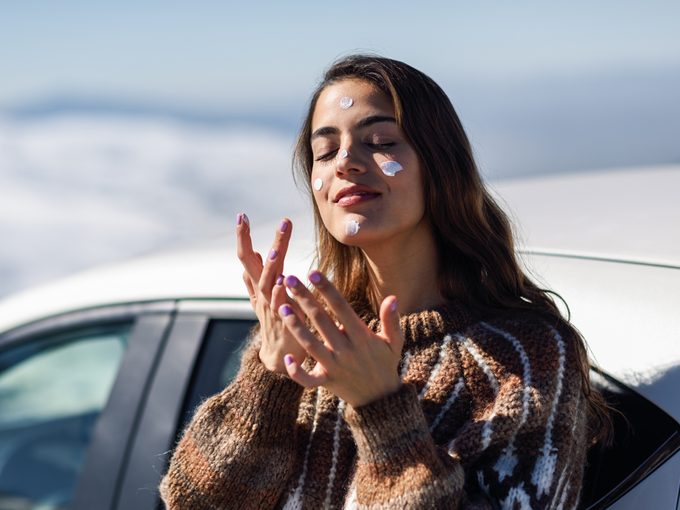Here’s the Deal with Sun Damage
Neutrogena® and Melanoma Canada have teamed up to help Canadians protect themselves from those harmful rays and detect skin cancer earlier.

For many, May marks the start of long-awaited warm weather, celebrating the first of many trips to the cottage, weekends spent in the garden or with friends at a park and, of course, time spent in the sun. There’s no denying a hit of vitamin D feels extra good after a dull few months, but when was the last time you thought about how those sunny days were affecting the health of your skin long-term?
Sun protection seems to be a low priority for many people above the equator. A survey* conducted in 2021 showed that 44 percent of North Americans experienced a sunburn that year. Yet, only 19 percent claimed they wore sunscreen daily, leaving those who didn’t at an increased risk of developing skin cancer—assuming they were applying and reapplying correctly.
To make sun safety a priority and remind people of its importance, Neutrogena®, a fan-fave brand in skincare, has partnered with Melanoma Canada to inform Canadians of good sun-protecting and skin cancer-detecting habits.
As we inch closer to summer, and with Melanoma and Skin Cancer Awareness Month arriving May 1, these partners are taking the opportunity to shed light on the seriousness of UV damage and melanoma, sharing every bit of information they can find under the sun (pun intended).

How the partners have—and will continue to—come together for Canadians
For years, people have relied on Neutrogena® for their tried-and-true personal care products that support overall well-being. From the brand’s SPF-packed skincare to their extensive line of broad-spectrum suncare products, they’ve established themselves as a trustworthy choice for keeping you and your skin safe.
The expert-led organization Melanoma Canada has also remained a reliable source for prioritizing the long-term health of Canadians. So it should come as no surprise that these partners have successfully launched many collaborative educational programs, community outreach initiatives, and social media campaigns.
Most recently, they hosted the 7 Summits Snowshoe Challenge for Skin Cancer in February and March 2023. This virtual and in-person event asked participants to snowshoe, bike, run, skate, or ski the distance equal to the seven tallest summits in the world, or as many as they could endure, all to encourage sun-safe activity during the winter. The challenge raised $185,193 for skin cancer awareness and reached the screens of over 26 million Canadians.
Beyond this event, the partners remain committed to promoting sun safety and skin cancer prevention year-round. After all, the sun doesn’t exclusively make an appearance during the summer (even if sometimes it may seem like it).
Neutrogena® provides continuous product and financial support for many of Melanoma Canada’s awareness events, including Strides for Melanoma—happening this year on May 28—while the organization helps promote the brand’s suncare and sun-safe initiatives to its community.

A quick refresher on what melanoma is, exactly
Melanoma is a cancer of the cells that produce melanin, the pigment responsible for giving skin its colour. When exposed to UV rays, the melanin naturally gets darker and causes the skin to tan or burn. The darker the skin cells, the greater their risk of forming abnormalities and spreading to other areas of the body.
Although melanoma is most common in people aged 15-49, it can affect any age and anyone regardless of sex or race. While it’s potentially deadly, it’s one of the most commonly diagnosed cancers as it’s often first visible on the skin. It’s also largely preventable with daily sun-safe practices and regular self-checks.
Your guide to the ABCDEs and 123s of melanoma
Doctors use the ‘ABCDE rule’ to identify abnormal characteristics on the skin. Doing this yourself at least once a month could increase your chance of catching something in the initial stages since melanoma has an 85 percent survival rate if detected early enough. Use this simple rule to keep a close eye on your skin and check for:
- Asymmetry in the shape of the spot
- Border irregularity that makes it look ragged, notched, uneven, or blurred
- Colour variety with shades of black, brown, tan, grey, pink, white, and sometimes blue
- A Diameter bigger than 6mm, which is the size of a pencil eraser
- Evolution in size, shape, or colour as a mole or lesion will change with time and may be itchy, scaly, or bleeding
Neutrogena® has also developed its comprehensive Skin Self-Exam Tool, which is easy to incorporate into your routine. The tool contains stats, tips, and other resources to help spot melanoma at home.
To ensure you’re covering your bases, Melanoma Canada created 3 Ways to Block the Rays, a campaign supported by Neutrogena®. The guide includes beneficial habits for keeping you protected. Even practicing just one of the three habits could go a long way.
- Apply sunscreen with at least 30 SPF every day, regardless of how much sun there is, as recommended by Health Canada.
- Wear UVA/UVB protective clothing.
- Seek shade during peak hours, typically between 11 a.m. and 3 p.m.

At the end of the day, your best offense is a good defense
Prevention is crucial in lowering your risk of skin cancer. With the leading cause being overexposure to UV rays, protecting your skin from potential damage is an absolute must. A single blistering sunburn before age 20 could increase your risk of developing melanoma later in life. So why not start taking care of your skin now?
When it comes to suncare, Neutrogena® has you covered—literally. Their best-selling Ultra Sheer Sunscreen line has non-greasy options for both your face and body. Not to mention that along with great coverage, they also boast a seamless, lightweight feel. But protection isn’t just about what you apply to your skin, it’s also about how you apply it and how much.
The experts at Neutrogena® say that to be properly protected you need to apply sunscreen 15 minutes before stepping into the sun for proper absorption and reapply it every two hours. They also say that the amount you should be applying is about the size of a golf ball for your entire body and the length of two fingers for your face.
Want more information on how to stay safe in the sun and decrease your risk of melanoma?
You can discover Neutrogena®’s range of sun-protective products and daily suncare habits at www.neutrogena.ca/sun and learn more about Melanoma Canada and their awareness initiatives at www.melanomacanada.ca.
*Data on File, Johnson & Johnson Consumer Inc





